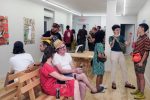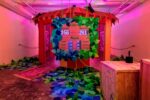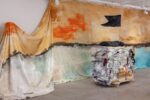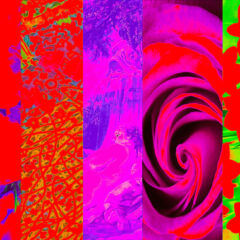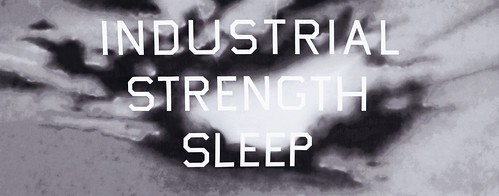
Ed Ruscha
In collaboration with The Fabric Workshop and Museum, Philadelphia
Industrial Strength Sleep, 2007
Merino wool, cotton, and Trevira CS tapestry; edition of 7
109 1/2 x 276 inches (278.1 x 701 cm)
The Fabric Workshop and Museum, Philadelphia
Photo: Aaron Igler and Will Brown
Last June the Fabric Workshop and Museum was bounced from its home at 1315 Cherry Street when its building was demolished to make way for the Convention Center expansion. In order to keep showing art, the Museum took up residence at an interim space at 1222 Arch Street while waiting for a new permanent home to be retrofitted.
The new space, a six-story Victorian building located down the block from their temporary home, opened a few weeks ago. The inaugural show—the first solo exhibition in Philadelphia by L.A. artist Ed Ruscha—showcases what the FWM is known for: collaborating with an artist to create work using materials the artist has never used before. In this case, Ruscha and the FWM created a huge, digitally produced tapestry based on his 1989 acrylic painting Industrial Strength Sleep.
Ruscha’s work is challenging. His paintings bear cryptic phrases, often in bold uppercase letters and on backgrounds that evoke the sublime in all its threat and beauty. At the FWM the new tapestry (produced in Belgium at Flanders Tapestries) is surrounded by works by the artist dating from the same time—including the large painting on which the tapestry is based. All the paintings and drawings are darkling works with white letters on black and white backgrounds that depict an ominous film noir sky. Fiber-Optic Suburbs , Something or Other, Amusing Alloys and Ye … are more of the word offerings in works that combine to create a kind of 2-D nocturne.
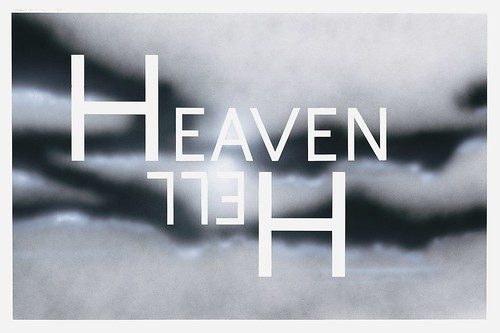
Thomas Crow’s wonderful and insightful essay in the show’s catalog tells of Ruscha’s love of movies and film noir. Raymond Chandler and especially The Big Sleep are context for Ruscha’s Industrial Strength Sleep, which surely doesn’t refer to a baby’s nap but something more like Chandler’s notion of the one big sleep we all take in the end.
Ruscha, though, has tweaked the concept by inserting the pop culture phrase “industrial strength,” often used ironically to refer to something that’s nonindustrial but strong (“industrial strength coffee,” for example). The 9-by-23-foot tapestry, made by use of industrial-strength weaving machines, is itself a great stroke of wordplay.
Made from a low-resolution image of the painting, the tapestry softens the work through sheer material transformation and tames its chilly edge without making it lose its awesome impact. The weaving is both warmer (black threads create deep, seductive velvety passages) and more abstract (on close inspection the work becomes a series of thread lines of various lengths and shades of gray) than the painting. It’s curious to see the two pieces side by side.
Curated by Los Angeles Museum of Contemporary Art’s Paul Schimmel, the exhibit runs through Oct. 25. Not to be missed: The artist will give a free lecture at FWM on Oct. 3. There’s no reserved seating so get there early.
On the horizon, the museum will install a large show from the collection. Their holiday party, traditionally one of the big art events of the winter season, will be in early December. And look for continued programming in the interim space, which now has a window display by up-and-coming artist Hank Willis Thomas.
With two sparkling new galleries, airy work spaces, state-of-the-art lighting, heating and cooling systems, specially made mahogany-framed windows and new elevators, the gypsy institution is finally in a more secure place.
Ed Ruscha: “Industrial Strength.”
Through Oct. 25.
Fabric Workshop and Museum,
1214 Arch St.
215.561.8888.


